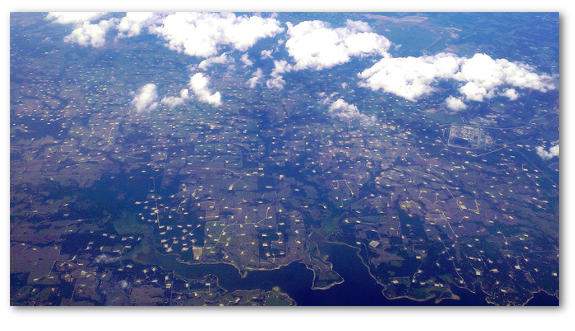Chris Hope has an article about shale gas in The Conversation today, and regular readers will not be surprised to read that he concludes that any progress in this direction should be accompanied by a carbon tax.
I was going to shrug my shoulders and move on to something else, when I noticed one of the pictures the editors had chosen to accompany the piece:
 That, I said to myself, is not a shale gas field. All those wells so close together suggests it long predates the horizontal drilling that has been such an important part of the shale revolution. A bit of googling took me to the Flickr page of the photographer, Amy Youngs, which revealed that she had originally captioned the photo as being of a shale field. To her credit, she had changed it when she received this comment:
That, I said to myself, is not a shale gas field. All those wells so close together suggests it long predates the horizontal drilling that has been such an important part of the shale revolution. A bit of googling took me to the Flickr page of the photographer, Amy Youngs, which revealed that she had originally captioned the photo as being of a shale field. To her credit, she had changed it when she received this comment:
This is NOT a picture of hydraulic fracturing. This is an old school oil field with vertically drilled wells, spaced so production can be maximized out of a tight formation. The wells may or may not have been fractured over their lives to stimulate production. If these had been modern fractured wells, the ones everyone is so up in arms about, draw a line from any one of those pads in any direction for a couple of miles out and count the wells that lay on that line or within a quarter mile either side of it. That's how many wells a single, modern, horizontally drilled and hydraulically fractured well can replace.
Ms Youngs had helpfully given the Google Maps reference for the field, which shows that it is just to the east of the small town of Groesbeck Texas. This suggests that it is the Mexia-Groesbeck oilfield, which dates back to the 1920s. You can take a closer look on Google Streetview.